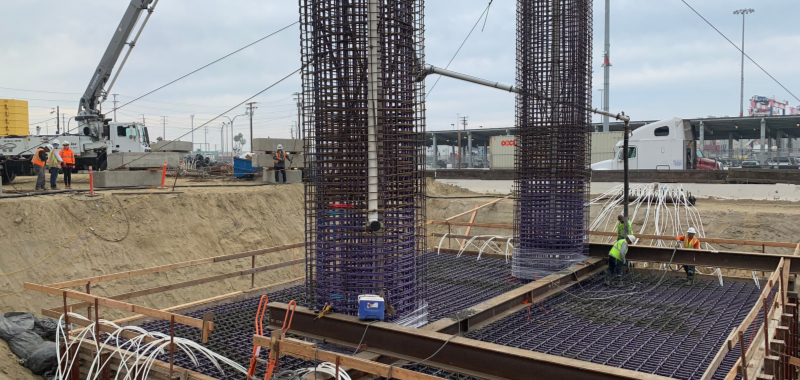ANNOUNCEMENTS

At the beginning of November, the construction team placed the last of the 352 underground piles on top of which the superstructure of the new bridge has been and will be continue to be built. Piles are built in clusters to support the bridge columns and two towers. Connecting most of the more than 100 columns to their pile clusters requires construction of pile caps. These large reinforced concrete slabs – some the size of small buildings – are built atop the pile cluster to evenly distribute the weight of a column into the piles.
Pile cap construction begins with building a lower “rebar mat” that is placed through the rebar cages (constructed nearby) that extend up from the finished piles. Once the lower rebar mat is complete, crews carefully lift the first column rebar cage (or section) into place. A crane operator positions the rebar cage over the partially constructed pile cap rebar. With the cage in position, an upper rebar mat is installed to join the pile cluster to the column rebar cage and complete the reinforced pile cap frame. Forms are installed, then a concrete pour completes the pile cap, resulting in a joined unit linking below-ground foundations with an above-ground column.
The last pile cap was placed right before Thanksgiving, alongside Pico Avenue on the east side of the Bridge Project. This pile cap will support one of the final columns being constructed to build a new off-ramp from the eastbound decline into the city via Ocean Boulevard or Port terminals via Pico Avenue.
If you’re curious, one of our Bridge Project engineers, Daniel Ramos produced a short video that shows how the installation of a pile happens. It includes footage of the last one being drilled. Click here to view it.